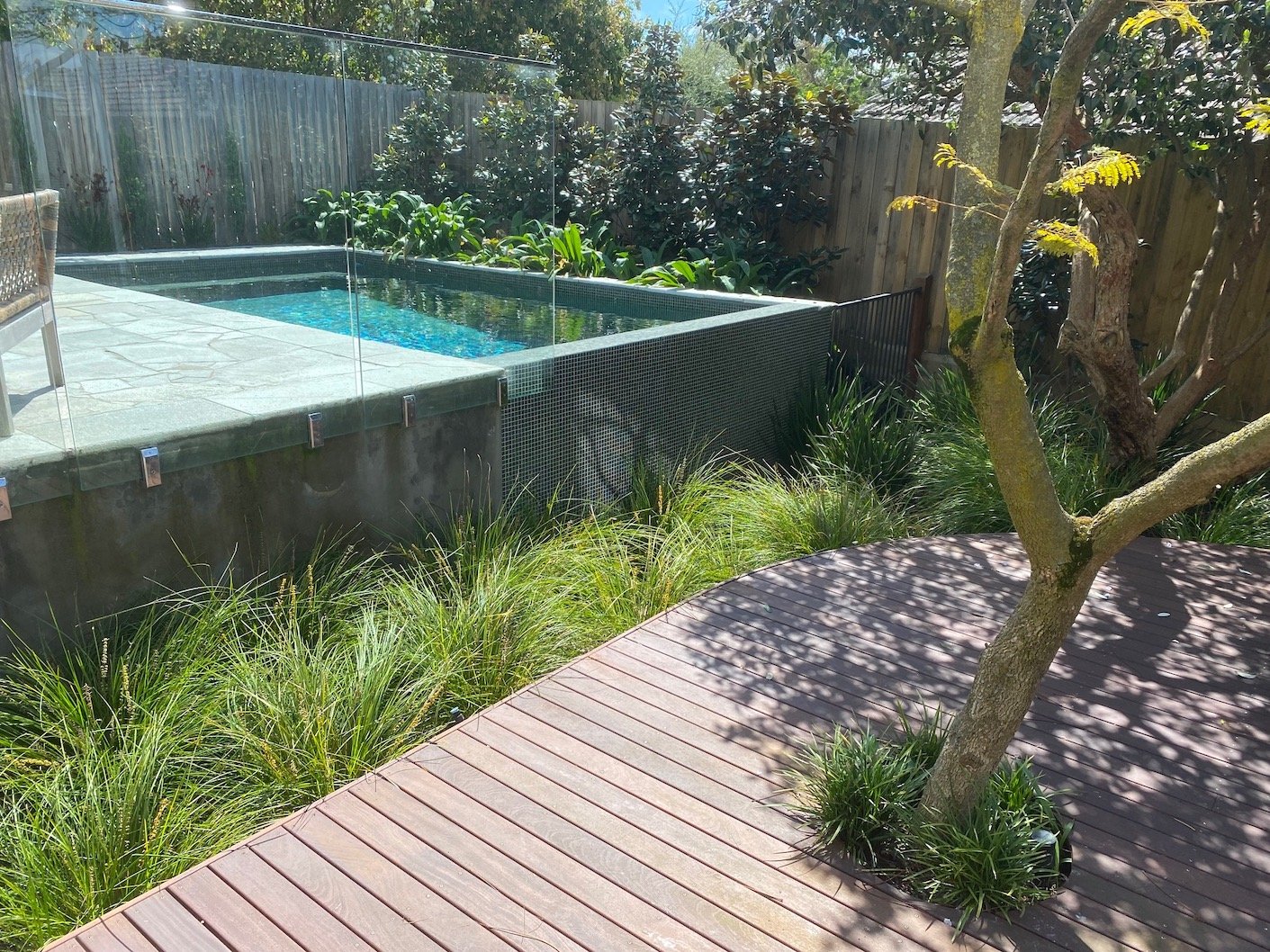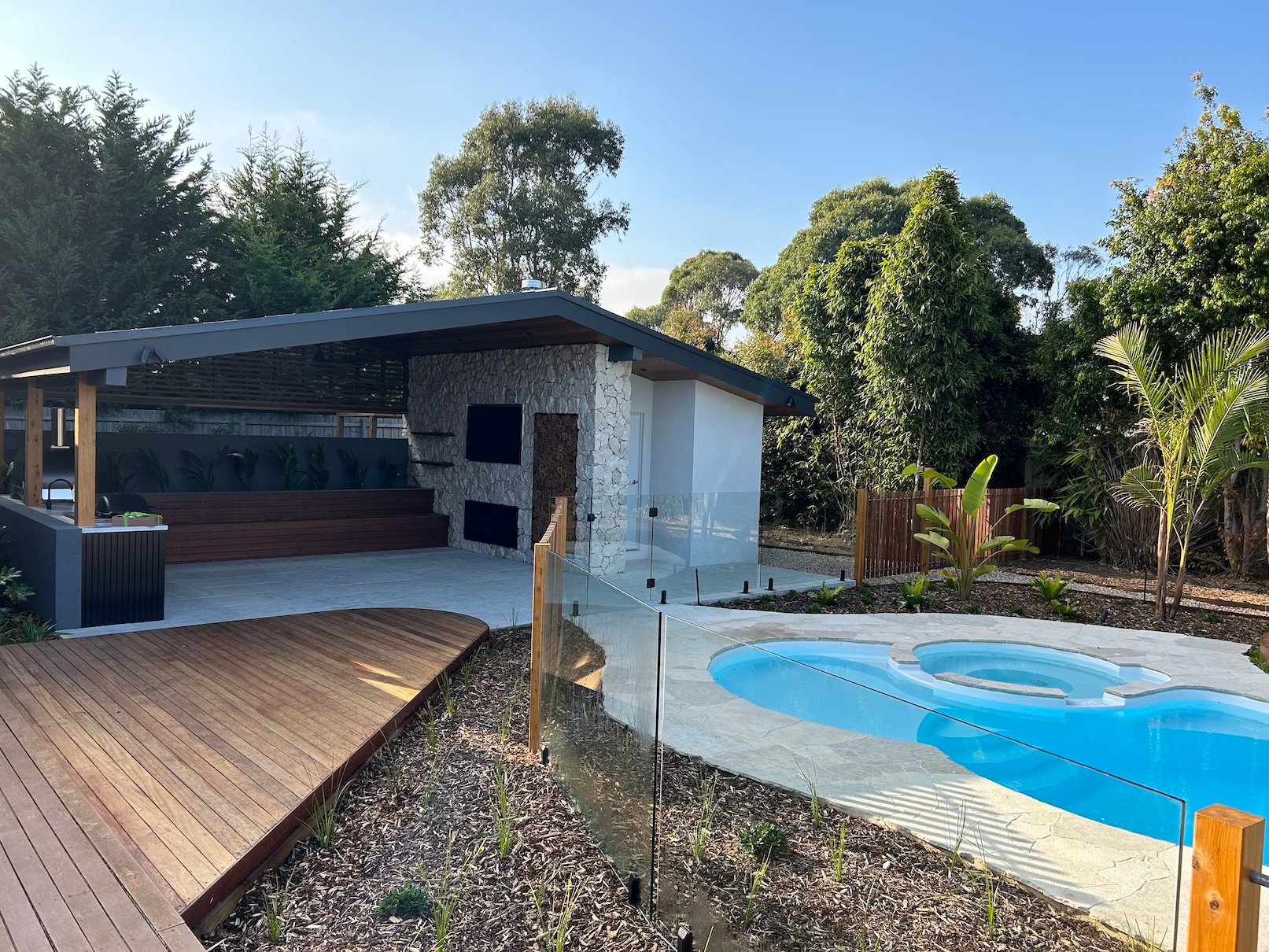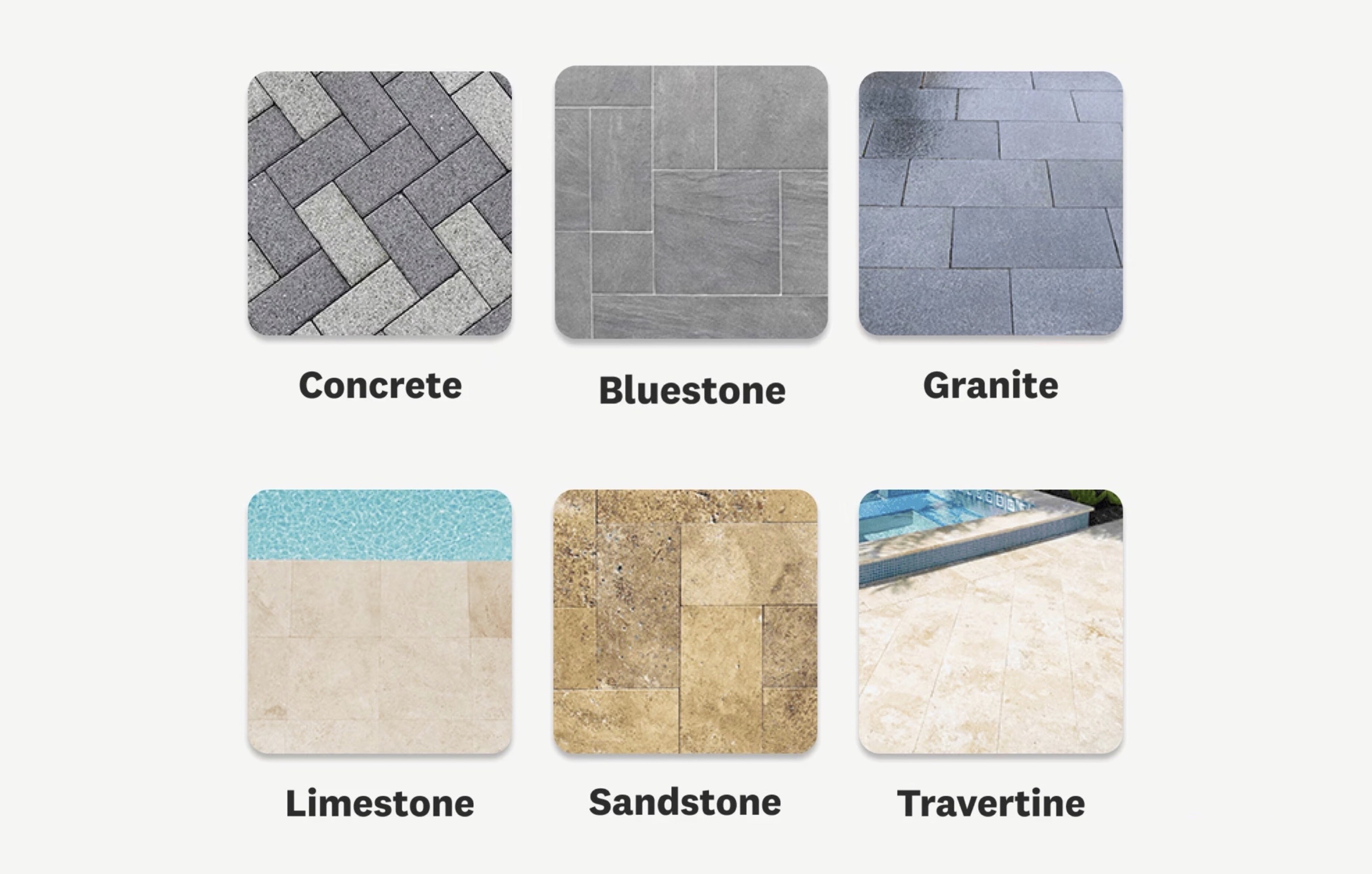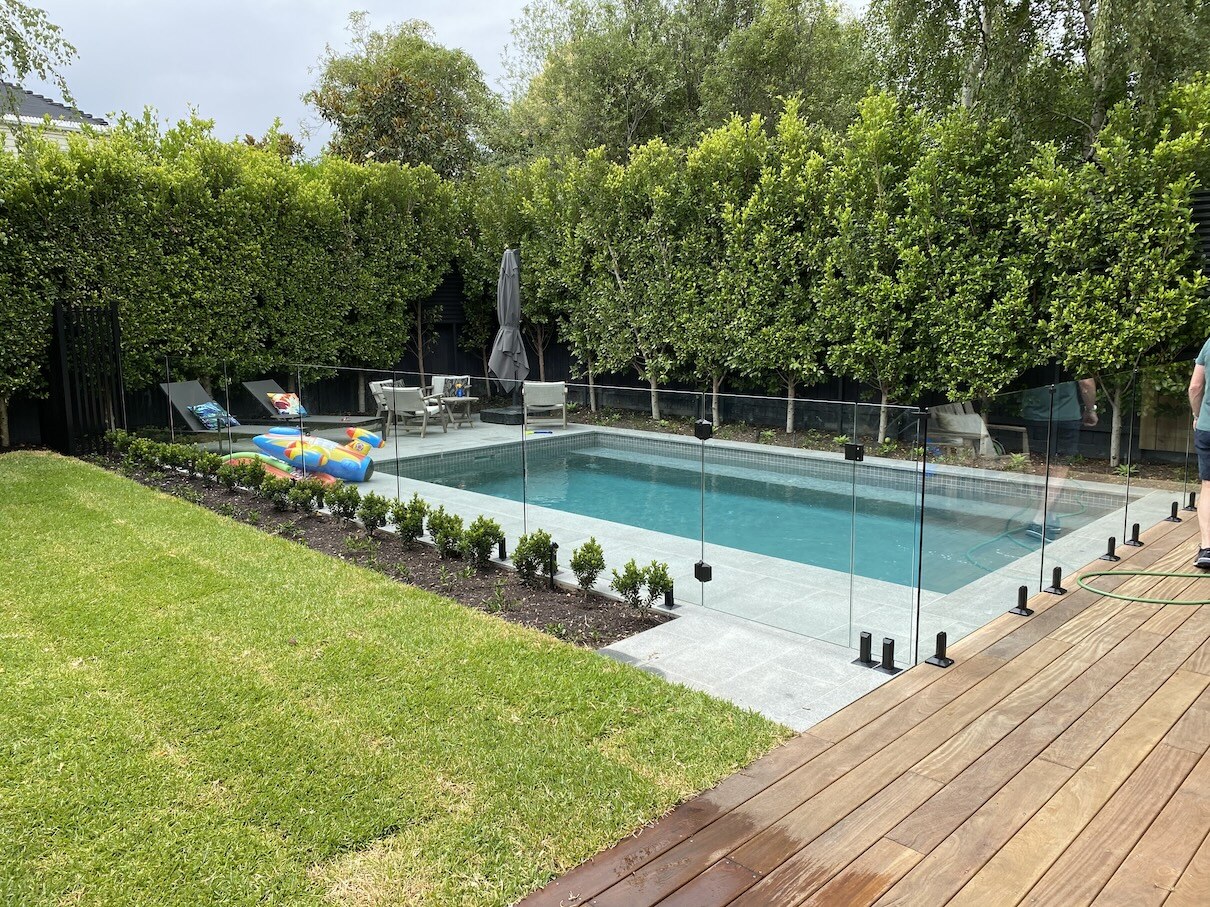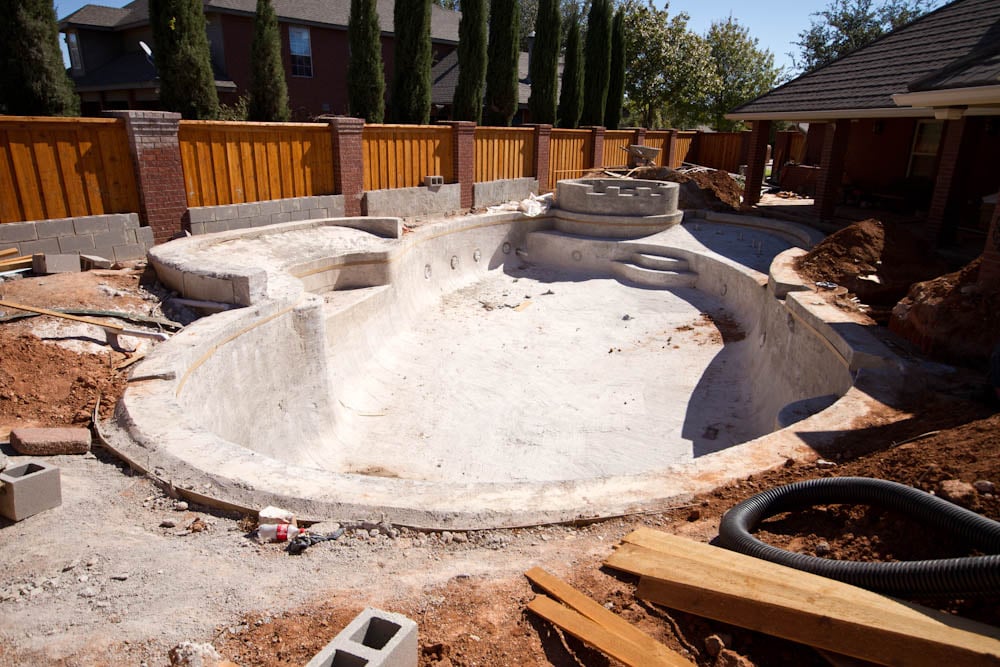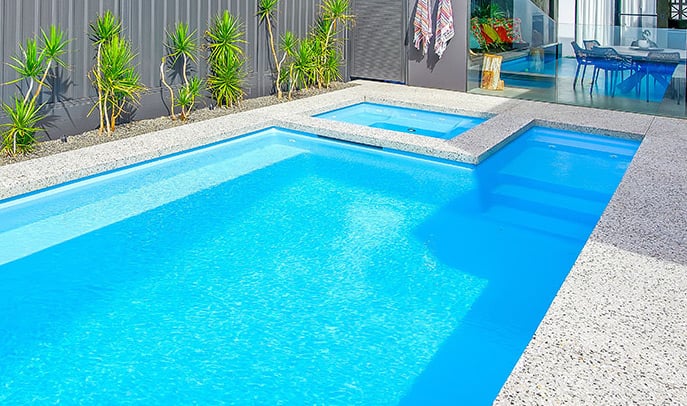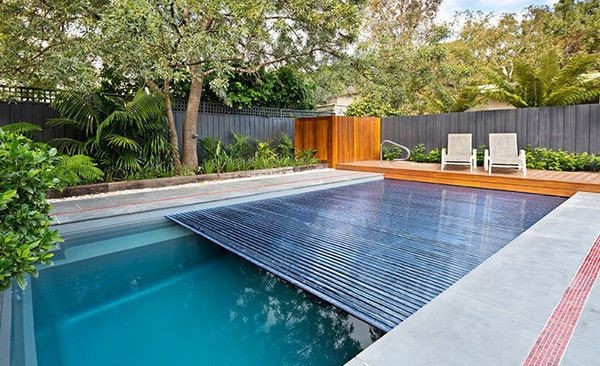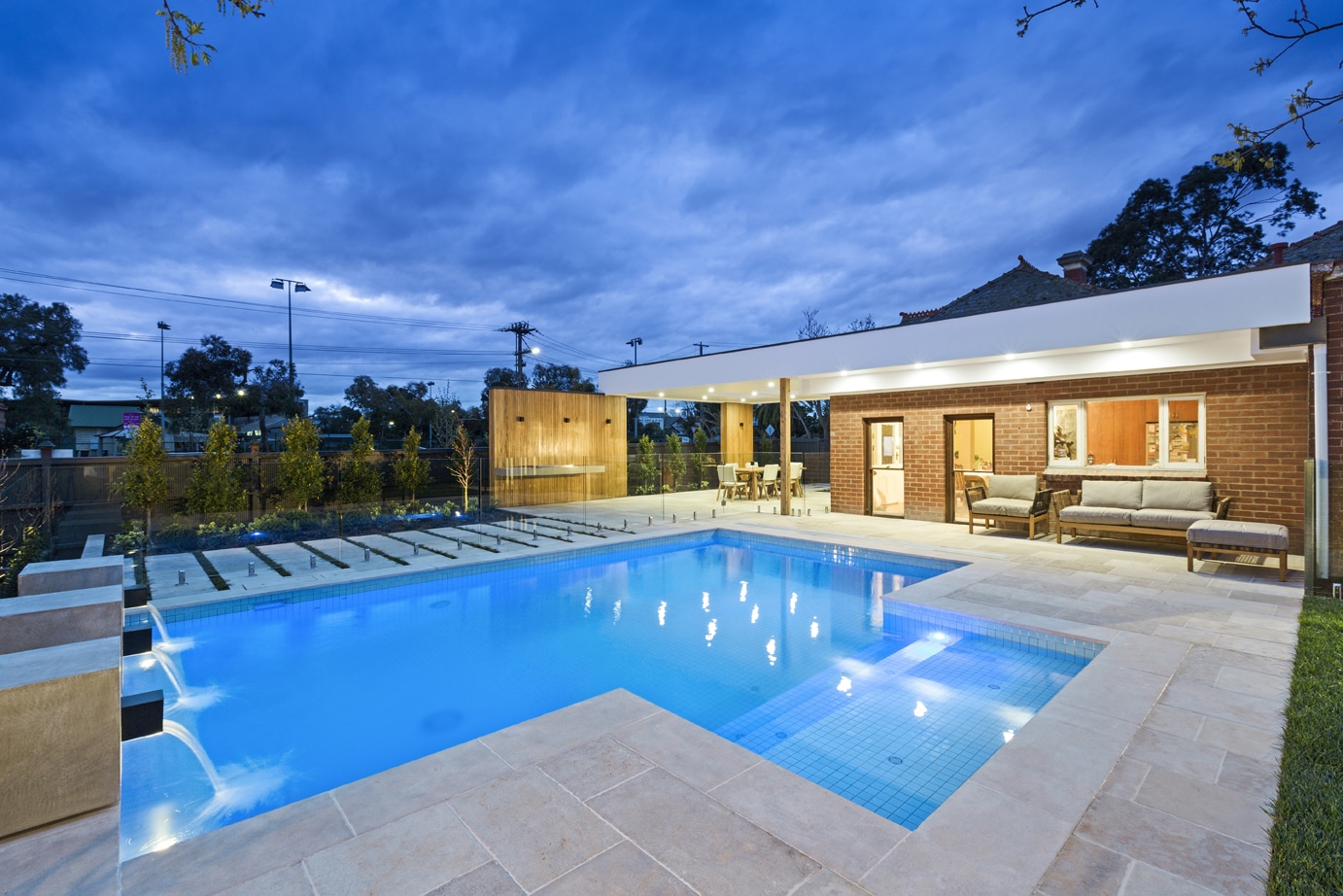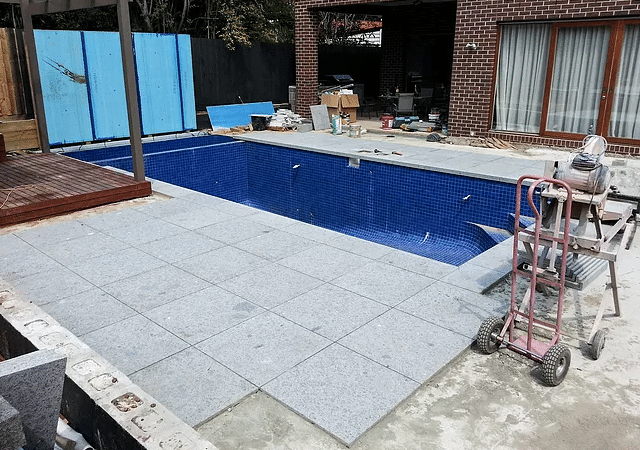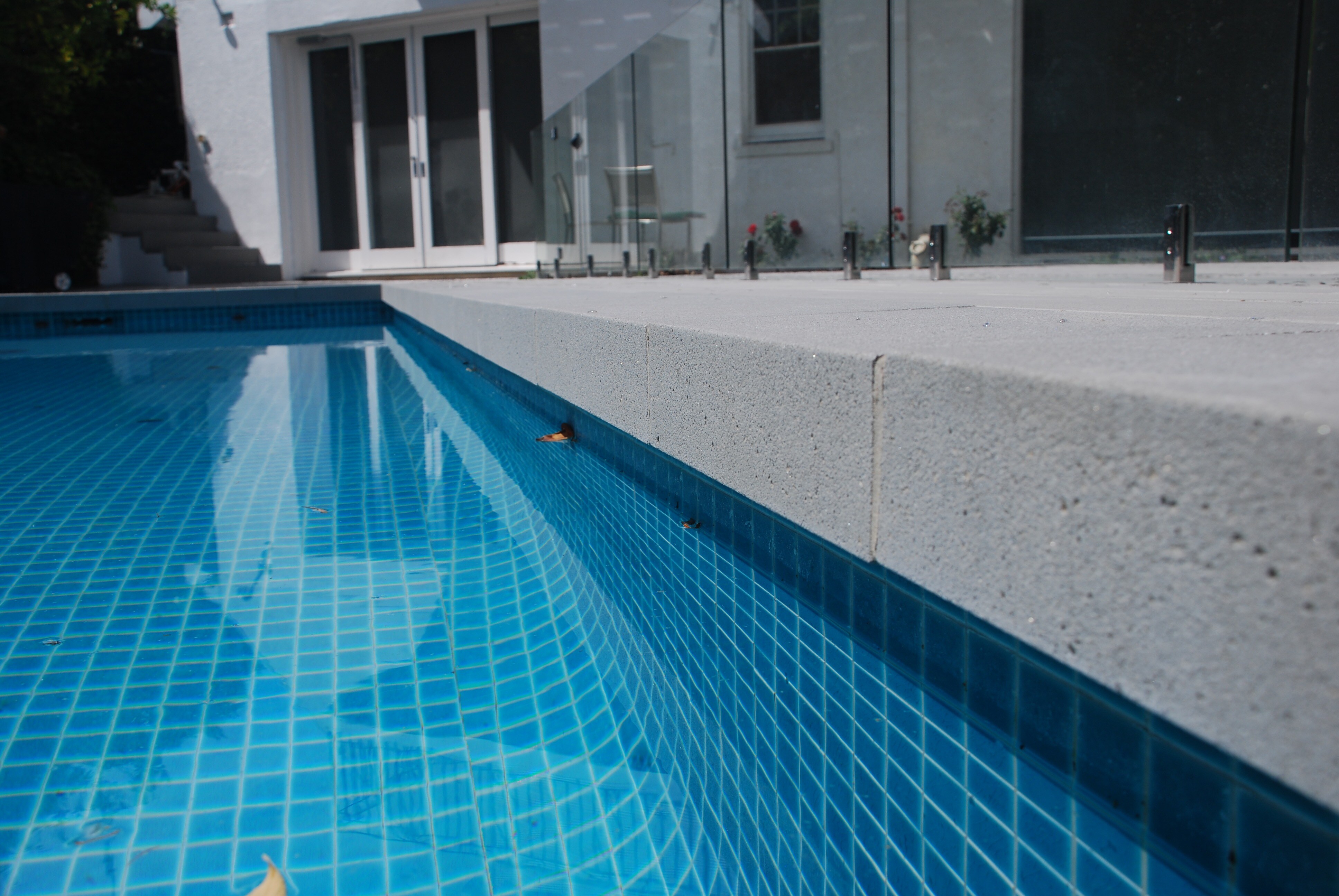
Are you installing a swimming pool? Have you heard your pool company or landscaper talk about pool "coping"? Are you wondering what coping is and why is it important?
As landscapers, we've been involved in the installation of literally hundreds of pools over the past 30+ years. So we know a lot about coping, what it is, why it's important and what the different types of coping are.
We hope this short article will help you understand everything you need to know about pool coping.
What is pool coping?
The word 'coping' literally means 'to cover'. In this case coping covers the edge or wall of the pool.
Coping acts as the interface between your pool and everything that surrounds it. It serves both a functional and aesthetic purpose.
Generally coping is installed with a slight slope away from the pool so that water on it drains away from the pool.
It will often have an overhanging edge that reduces the amount of water splashing out of the pool and provides a ledge for someone in the pool to hang on to if they need it.
Coping also provides safety around a pool. Ideally, it should always be made of non-slip material to prevent someone walking along the pool edge from accidentally slipping and falling into the pool.
It also provides a place from which to dive into a pool and assists with you climbing out of the pool if you don't have pool steps or stairs or you don't want to have to swim to them. Pool coping allows you to sit on the edge of the pool and dangle your legs in the water.
Aesthetically coping also finishes off the edge of the pool and creates an attractive edge around the pool.
Different styles of pool coping
There are many different styles of pool coping, depending on what type of pool you are installing and what the paving around the pool is made from.
Some of the most popular design styles for pool coping include
- Dropface
- Bullnose
- Square (or Pencil) Edge
- Timber/Composite Decking
You can also choose from a range of different materials for your pool coping. These can either match or contrast with whatever material you are creating your pool decking with.
To understand a little more about some of the most popular styles of pool coping, take a look at this video:
The dropface paver - your premium choice for pool coping
Dropface pavers are a popular choice for pool coping. So-called because they have a much thicker-looking drop edge at the front than the actual thickness of the main part of the stone or paver.
A typical drop face paver might have a 70mm drop edge at the front while the stone itself only measures 30mm. (Most drop face pavers are all one piece, but a porcelain drop face might actually be created from two parts joined together with a 45° mitre.)
As a premium product, they give the illusion that all the pavers around the pool are the thickness of the drop edge.
Dropface pavers can be a good choice for fibreglass pools as they give a more aesthetic finish. Given how they are made they cost considerably more than traditional square-edged or even round-edged pavers.
Shown below is a pool with a dropface paver. You can see how it gives the impression that all the paving stones around the pool are very thick.

Bullnose pool coping
Bullnose coping has a fully rounded edge. It provides a subtly softer look for a pool than a square edge.
It tends to be used for gardens and pools where the owner wants a more traditional classic look.
We used bullnose coping on this project in a Kew a few years ago. It features a beautiful Gosford Stone used both as paving and on the feature wall.

Square edge coping
Square edge coping is one of the most economical choices for many pool owners, making it fairly popular.
With square edge coping you simply use the pavers as they come, which saves on the cost of reworking them. This type of coping often works best with what are called 'tumbled' stone pavers. The edges of these pavers have been slightly rounded in the tumbling process to reduce any possible sharp edges.
They provide a very clean, square-edged finish to a pool as shown in the example below.

Concrete coping
If your pool project has a concrete surround, you can choose to have the coping created from the same concrete. This provides perhaps the simplest and most economical approach to surfacing around a pool.
It also gives a very clean appearance and modern look as you can see here.

How curved pool coping is created
If you are installing a rectangular, straight-edge pool, your coping options are fairly simple and straightforward. But if you are installing a curved pool, using straight-edged pavers for your coping can leave a slightly unfinished look, depending upon the arc of the curve.
One option is to use smaller pavers and place them close to each other to simulate a curve. However, this doesn't give you a very smooth curved finish.
A better alternative is to have your landscaper coordinate with the paving supplier to cut the pavers to precisely match the curve of the pool creating a perfectly smooth shape.
Naturally, this will significantly increase the cost of the pool coping and add time to the project as well. But the result can be worth both the time and money, as the image below shows. The curved coping pavers create a beautiful finish for this curved pool.

Timber Decking/Coping
If you are installing a timber or composite timber deck around your pool you can also choose to have your pool coping made from the same material as your deck.
Timber coping provides all the same functional benefits of protecting the edge of your pool and works in the same way as if your coping was made of stone pavers. But if using timber you should be aware it will require increased maintenance by regular oiling. Chlorine will eat away at the timber, so prevention is vital.
Composite decking is much more durable than regular timber when installed next to the waterline.
Here is an example of a project where we used composite decking all the way up to the waterline.

We hope that you found this article about pool coping informative and that it helped you discover some clarity about what might be the best pool coping option for your next pool project.
If you have additional questions about an upcoming landscaping project for your garden that may include a pool, we recommend you read these additional articles:
Additional reading on pools & landscaping gardens in Melbourne & Mornington Peninsula
Which is better in Melbourne - a fibreglass or concrete pool?
Integrating Your Pool into Your Landscape: A Comprehensive Guide
How to get things right with your pool installation
If you have any other specific questions about the whole process of installing a pool and landscaping your garden, please feel free to book a free consultation with one of our designers. It's your opportunity to have an obligation-free discussion about your thoughts, ideas and challenges with an expert who has designed many garden pool projects before.
Andrew Whyte
Founder of Whyte Gardens
Topics:

